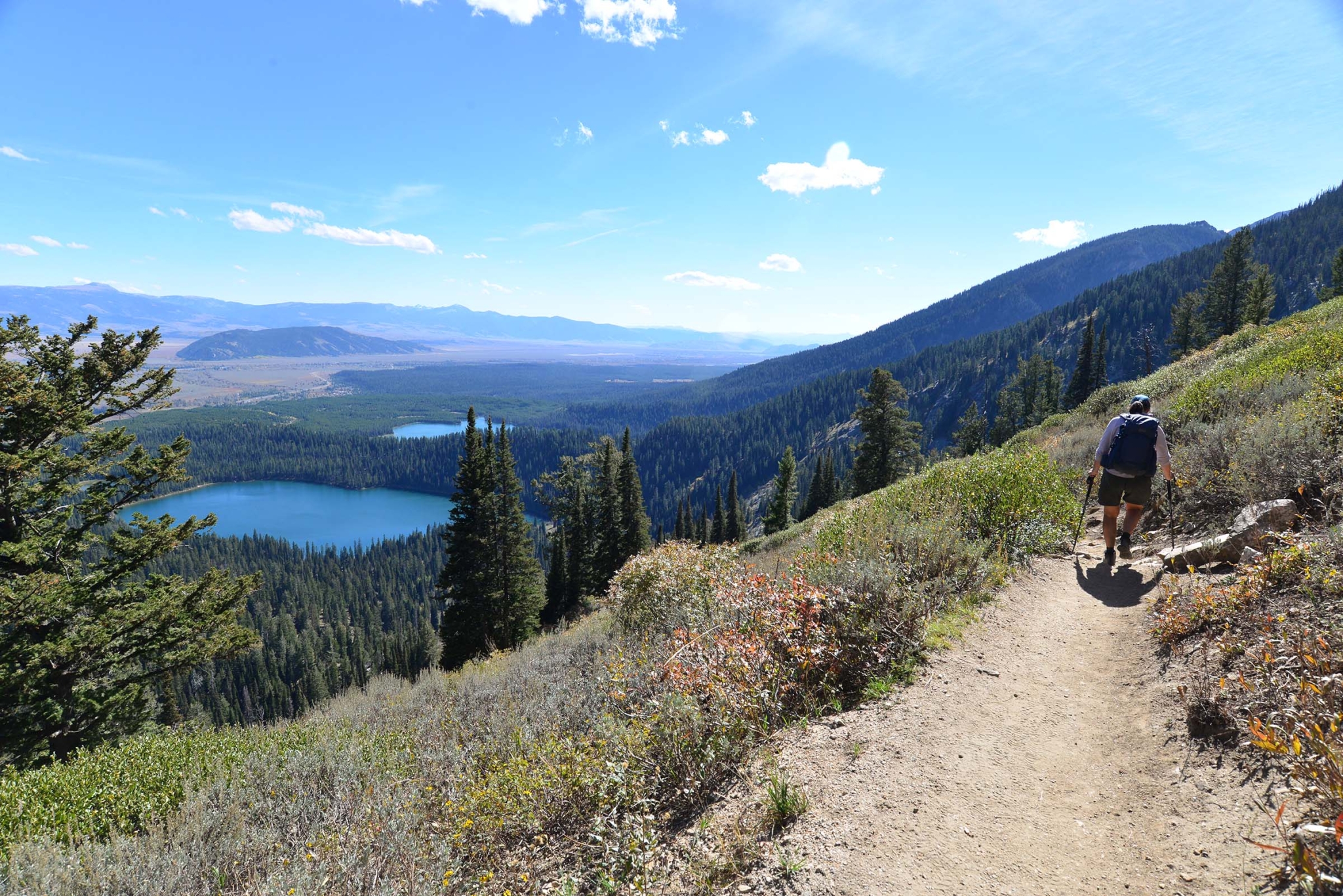Putting the Airfoil Jacket to the test in the Grand Tetons
A week out West in the Grand Tetons in Wyoming and surrounding areas can be a sublime experience. To do it at the start of fall allows for the changing of the season and all the splendors that come with it. Golden aspens paint the landscape while the Tetons gleam with fresh snowfall and make for an epic journey. While the weather leads to an amazing experience, it also leads to an apparel predicament. With limited space, what outerwear would be up to the task? This week we put the Airfoil jacket to the test and it did not disappoint.
This trip saw a multitude of temps and weather shifts, as one might expect visiting the area in late September/early October. We saw temps below freezing and over 70˚F, as well as sunny skies and snow flurries. What makes the Airfoil Jacket the perfect travel companion is its versatility. It’s extremely lightweight, coming in under 1 lb., yet it’s warm enough to take on the coldest of mornings. It might not seem like the Airfoil can handle colder temps because of its lightweight stature but we put it to the test in temps under 30˚ out on the hiking trails. It kept us cozy, but not overheated. The drawstring chord helped seal out wind gusts while trekking up the mountain to pristine alpine lakes (we’ll get to this later), while the fleece collar kept the neck warm.

While keeping warm is a must, what really impressed me was the Airfoil’s ability to be packed inside its interior pocket. Out on the trail carrying a jacket is cumbersome, especially when you need all available hands for hiking poles or even rock scrambling. And tying it around your waist restricts movement (and let’s be honest—can look a little goofy). In a few short seconds, the Airfoil becomes a compact pouch that can be added to your pack or even attached with a carabiner. Simply locate the large internal pocket, and start shoveling the jacket in until it fits neatly into the pocket. Once complete, zip it shut and add it to your pack, or use the included loop to attach it to your pack or belt loop. Considering the jacket is so lightweight, adding it to your pack won’t slow you down. The last thing you want out on the trail is more bulk.

While warmer mid-day temps will make you remove the Airfoil jacket, cooler afternoons or cloudy conditions will make you want to put it right back on. As easy as it is to pack in its pocket, it’s even easier to take back out. Oftentimes on a hike, I don’t want to deal with heavier outerwear that will add unnecessary weight to my pack. Unfortunately, leaving these items at home comes at a risk: mountain weather can be unpredictable and heading out on a 10-mile hike without a warm jacket isn’t a smart decision. The Airfoil eliminates this risk. No longer do I have to be without a warm outer layer in case of weather changes or worse, getting off trail and being stranded for a long period of time. The Airfoil really is a security blanket in a lot of ways. I won’t head out anymore without it.
The Airfoil Jacket is available in men’s and now also women’s sizes.
Hiking spotlight: Delta Lake, Grand Tetons National Park

Now for the good stuff. For the ultimate test, we headed out to Delta Lake in Grand Teton National Park. You won’t find this hike in any National Park newspaper or map. This is an unmarked 8-mile hike to one of the most stunning lakes in the park. It includes scaling boulder fields (yes multiple fields), lots of rock scrambling, and a last half mile of pure vertical ascent—not for the faint of heart. Coming in at a little more than 2300’ of elevation gain, this hike is sure to get the heart pumping, the lungs burning, and the calves aching but it’s worth every painstakingly rugged step.
The hike veers off of the Amphitheater Lake route and might be a little tough to find if you aren’t familiar with the turn-off. While the lake is marked on park maps, the trail is not. Using an app like AllTrails is highly recommended, as it can help navigate you to the turn-off and through unmarked boulder fields and help you get to the final destination. This isn’t a technical route—anyone can accomplish it, but if you have a fear of heights or are a beginning hiker you might want to sit this one out. There are multiple lakes in the Tetons that are beautiful and don’t require as much elevation gain or rock scrambling. There are sheer drop-offs and loose rocks/dirt, making this a treacherous hike in spots. But if you take your time and every step with care, it’s certainly doable.

Hiking through the boulder field
The payoff is worth every step. If you like a little adventure, you’ll enjoy this one as it isn’t your typical route (as explained above). It’s one where you can really enjoy the journey as well as the payoff. And what a payoff! This glacially-fed lake has a milky turquoise color that you won’t find with most lakes in the park. As you’re scaling the side of the mountain the views are amazing. You can see Taggart, Bradley, and even Jenny lakes below and also look out into the valley. Once you reach Delta Lake, take your time and do more exploring. Walk to the opposite side to see the stream coming down directly from the glacier up above. If you’re feeling particularly adventurous, take a plunge in its frigid waters. I wasn’t brave enough for that on this day, but dipping my toes in was all I needed. Once you’ve explored, take a seat on one of the many boulders around the lake, take in all its beauty, and refuel for the challenging route back down.

A view from the far bank of Delta Lake
The facts:
Trailhead: Lupine Meadows
Distance: 8 miles round trip
Elevation gain: 2300’
Rating: Difficult
Time: It took us 6 hours total, which included about an hour or so at the lake. We took our time with lots of breaks and route planning.
Popularity: expect to see lots of people on this trail even though it isn’t marked. It might be the worst-kept secret in the park. If solitude is what you are seeking, go early and in the off-season (check the weather, these hikes can be covered in snow late into the summer season). If you are looking for a little guidance on the trail, you shouldn’t have trouble finding some helpful hikers willing to point you in the right direction if you venture out late morning/mid-day.

Essentials to bring:
- Good hiking boots. I’m usually a trail running shoes kind of hiker, but for this, hiking boots are recommended. Ankle stability and grip are essential.
- Lots of water. A great deal of this hike is exposed, so bring enough water to get you through.
- Snacks. You worked so hard to get there, don’t forget to enjoy it with some snacks to bring the energy back up.
- Layers. As mentioned, weather can be unpredictable and temps will fluctuate, so having layers is important – the Airfoil Jacket was perfect. A beanie might be useful as well, since the wind can kick up.
- Hiking poles. These will help with stability. This hike is all uphill out to the lake and will get steep in a lot of sections. Hiking poles can help.
- Map/navigation app. This route is not marked on the national park map, so using another map will be very helpful.
Have fun! Be careful!





Leave a Reply
Want to join the discussion?Feel free to contribute!